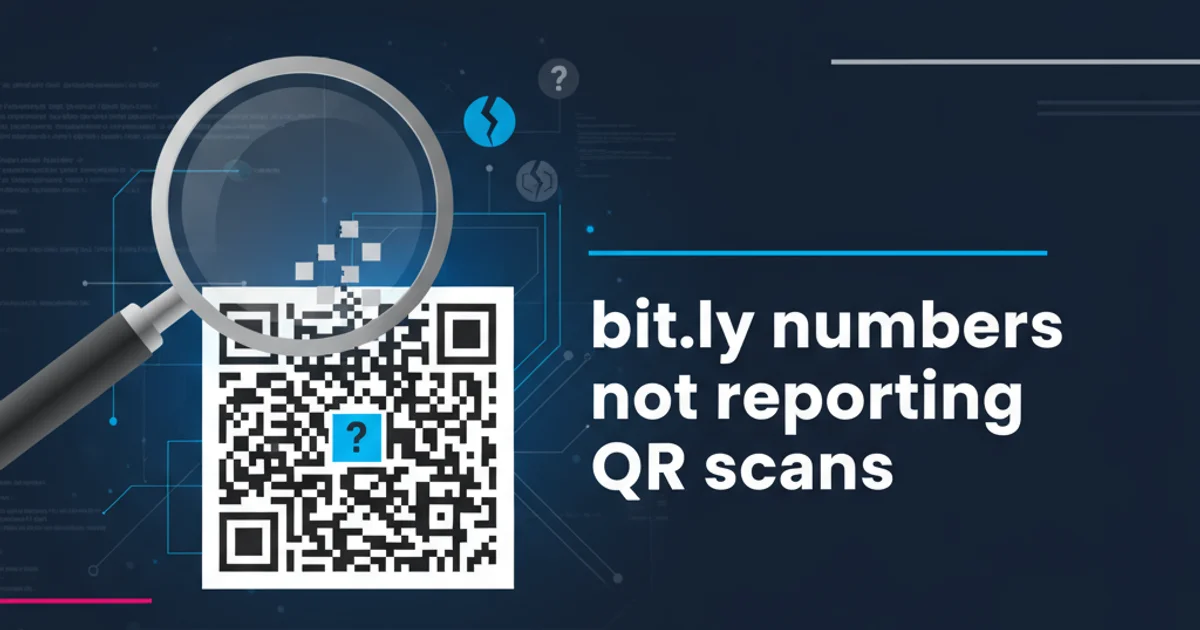bit.ly numbers not reporting QR scans
Categories:
Troubleshooting Bit.ly QR Code Scan Reporting Issues

Discover why your Bit.ly QR code scans might not be reporting correctly and learn how to diagnose and resolve common tracking discrepancies.
Bit.ly is a popular URL shortening service often used to create trackable links, including those embedded in QR codes. When users scan a QR code linked to a Bit.ly URL, they expect to see accurate scan data reflected in their Bit.ly analytics. However, it's not uncommon for discrepancies to arise, leading to frustration and uncertainty about campaign performance. This article delves into the common reasons why Bit.ly might not be reporting QR code scans and provides actionable steps to troubleshoot and ensure reliable tracking.
Understanding Bit.ly Tracking Mechanics
Before diving into troubleshooting, it's crucial to understand how Bit.ly tracks clicks. When a user scans a QR code, their device typically opens a web browser and navigates to the shortened Bit.ly URL. Bit.ly then records this as a 'click' and redirects the user to the original long URL. The tracking process relies on several factors, including the user's device, browser settings, and the integrity of the QR code itself. Any interruption in this chain can prevent a scan from being reported.
sequenceDiagram
actor User
participant QR_Code
participant User_Device
participant Bitly_Server
participant Destination_URL
User->>QR_Code: Scans QR Code
QR_Code-->>User_Device: Encoded Bit.ly URL
User_Device->>Bitly_Server: HTTP GET Request (Bit.ly URL)
Bitly_Server->>Bitly_Server: Records Click/Scan
Bitly_Server-->>User_Device: HTTP 301/302 Redirect (Destination URL)
User_Device->>Destination_URL: HTTP GET Request (Destination URL)
Destination_URL-->>User_Device: Serves Content
Note over User_Device,Destination_URL: User views contentSequence Diagram of a QR Code Scan and Bit.ly Tracking Process
Common Causes for Unreported Scans
Several factors can lead to Bit.ly not reporting QR code scans. Identifying the root cause is the first step towards a solution. These issues often stem from how the QR code is generated, how users interact with it, or specific browser/device configurations.
Troubleshooting Steps and Solutions
If you're experiencing unreported scans, follow these steps to diagnose and resolve the problem. Each step addresses a potential point of failure in the tracking process.
1. Verify the Bit.ly Link
Manually type or paste the shortened Bit.ly URL (not the QR code itself) directly into a web browser. Does it redirect correctly to your intended destination? If not, there might be an issue with the Bit.ly link itself or the destination URL.
2. Inspect the QR Code Content
Use a reliable QR code scanner app (different from your phone's default camera app, if possible) to scan your QR code. Confirm that the scanned output is the exact Bit.ly URL you intended. Typos or incorrect URLs embedded in the QR code are a common problem.
3. Check for Browser/Device Interference
Some browsers or security software might block redirects or tracking scripts. Try scanning the QR code using different devices (iOS, Android) and different browsers (Chrome, Safari, Firefox). If scans report on some devices/browsers but not others, investigate browser settings (e.g., ad blockers, privacy settings) on the problematic ones.
4. Consider Offline Scans
If a user scans a QR code but doesn't have an active internet connection, their device won't be able to reach the Bit.ly server. The scan won't be recorded until they connect to the internet and the browser attempts to load the URL. Bit.ly cannot track 'offline' scans.
5. Review Bit.ly Analytics Delay
Bit.ly analytics might not update in real-time. There can be a slight delay (a few minutes to an hour) before new clicks appear in your dashboard. Wait for a reasonable period after testing before concluding that scans are not being reported.
6. Avoid Direct QR Code Generators for Bit.ly
Some QR code generators offer their own tracking. If you're using a third-party QR code generator that also claims to track scans, ensure it's simply embedding the Bit.ly URL and not wrapping it in another tracking layer that could interfere with Bit.ly's reporting.